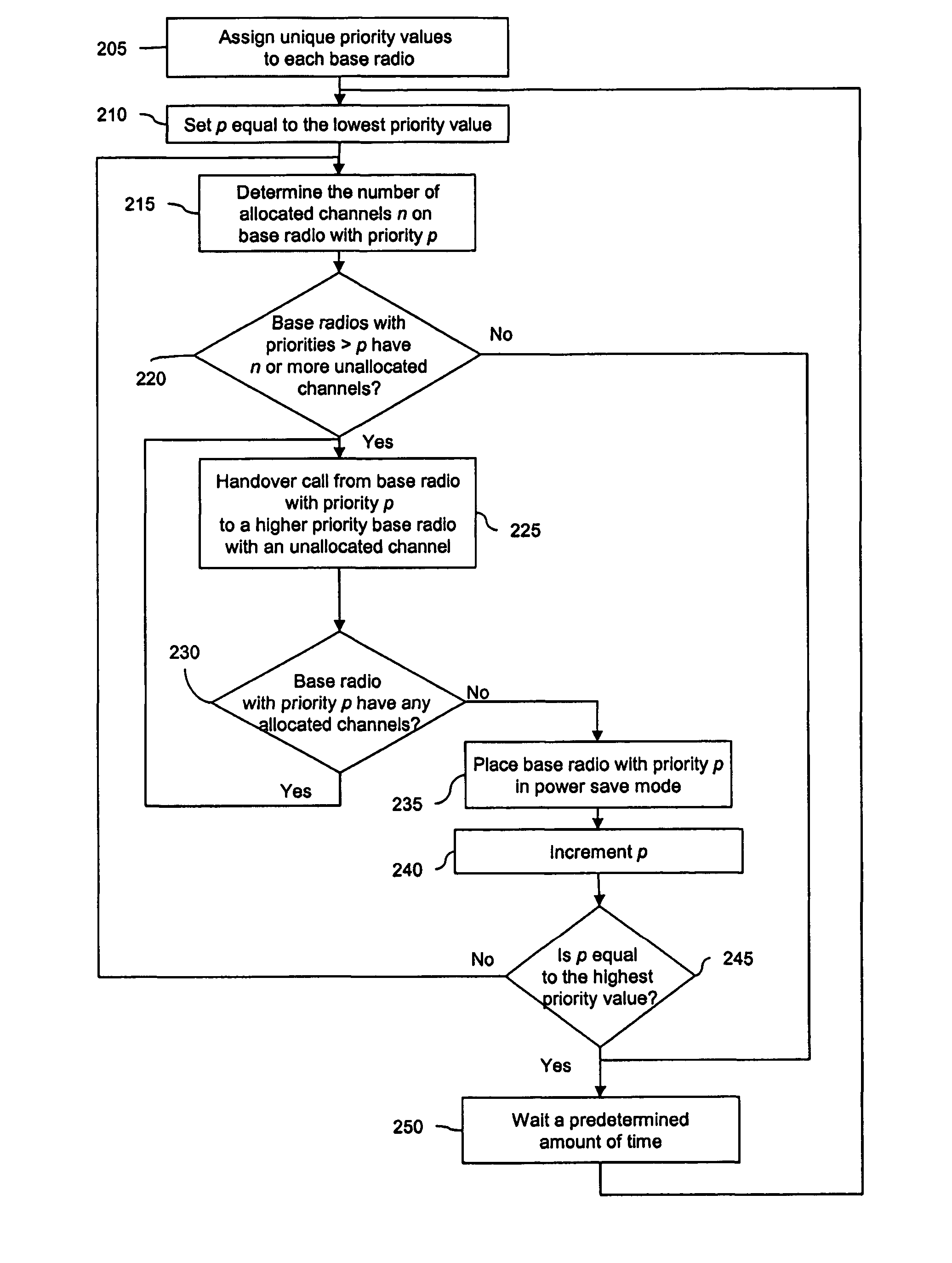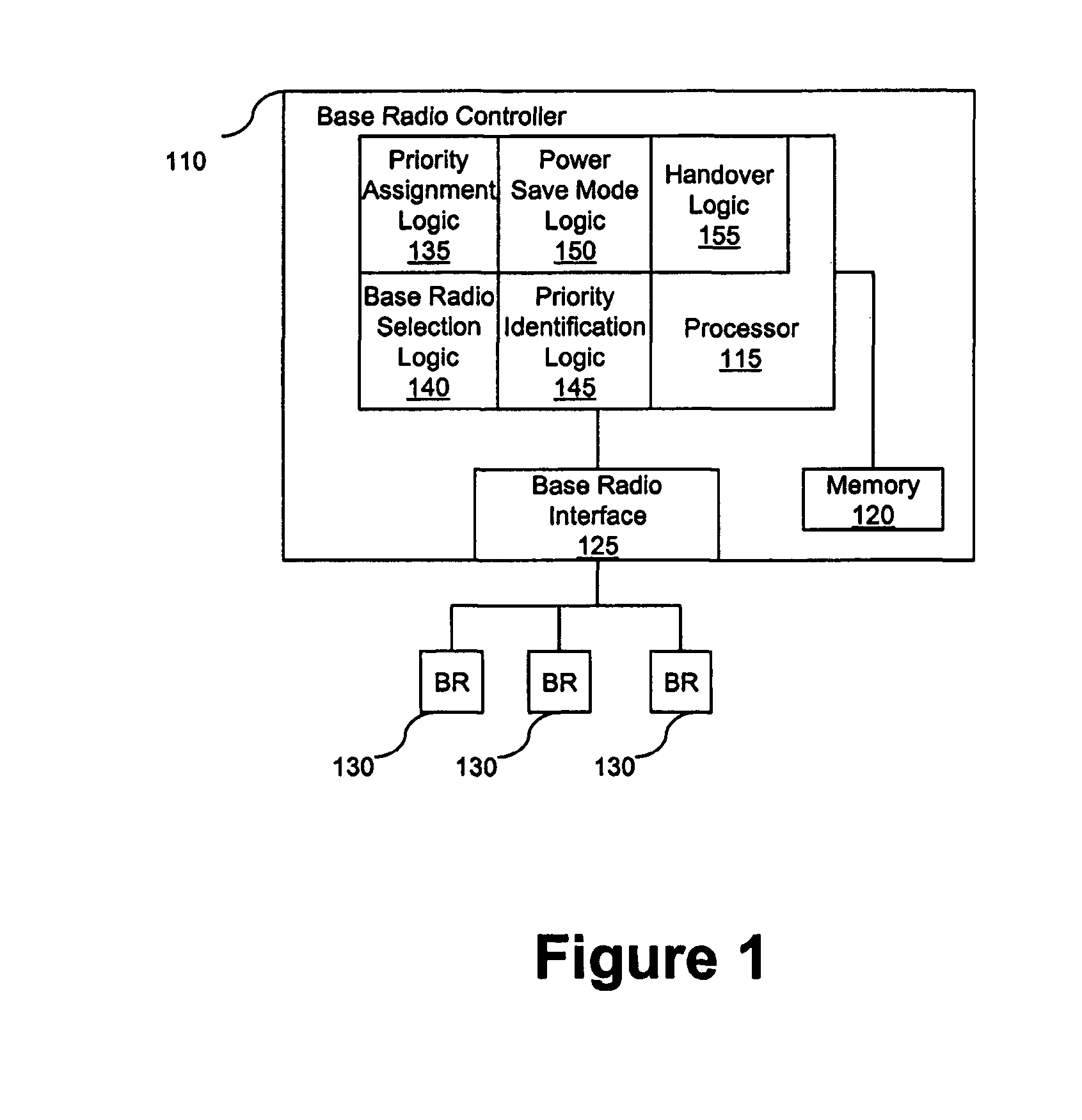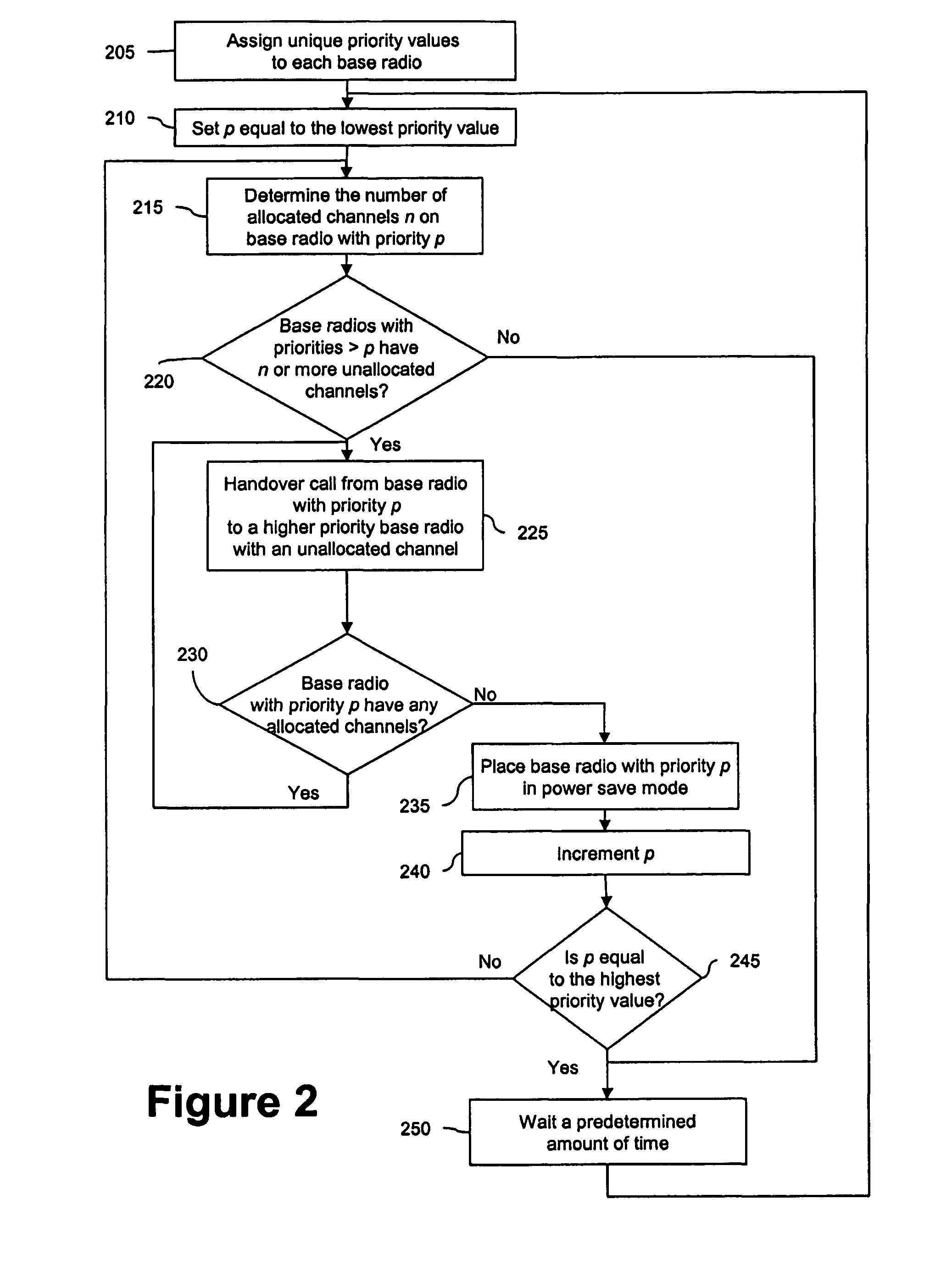Systems and methods for handovers between base radios
a technology of system and method, applied in the field of system and method for handover of base radio, can solve the problems of inability to completely eliminate interference, inability to attenuate the signal of base radio, inefficient use of electrical power, etc., to reduce power consumption, reduce or eliminate all the interference caused by base radios
- Summary
- Abstract
- Description
- Claims
- Application Information
AI Technical Summary
Benefits of technology
Problems solved by technology
Method used
Image
Examples
Embodiment Construction
[0008]FIG. 1 is a block diagram illustrating an exemplary base radio controller 110 in accordance with the present invention. The base radio controller includes processor 115, which communicates with a plurality of base radios 130 via base radio interface 125. Processor 115 includes priority assignment logic 135, base radio selection logic 140, priority identification logic 145, power save mode logic 150, and handover logic 155, all of which will be described in more detail below. Processor 115 can be a microprocessor running program code, an application specific integrated circuit (ASIC), field programmable gate array (FPGA), or the like.
[0009] Memory 120 is coupled to the processor 115, and can be used for storing the priorities of each of the base radios, storing a program for operating processor 115, and / or other conventional functions of a base radio controller memory. Memory 120 can be random access memory, read only memory, flash memory, a hard drive and / or the like.
[0010]F...
PUM
 Login to View More
Login to View More Abstract
Description
Claims
Application Information
 Login to View More
Login to View More - R&D
- Intellectual Property
- Life Sciences
- Materials
- Tech Scout
- Unparalleled Data Quality
- Higher Quality Content
- 60% Fewer Hallucinations
Browse by: Latest US Patents, China's latest patents, Technical Efficacy Thesaurus, Application Domain, Technology Topic, Popular Technical Reports.
© 2025 PatSnap. All rights reserved.Legal|Privacy policy|Modern Slavery Act Transparency Statement|Sitemap|About US| Contact US: help@patsnap.com



